As a parent, I know how vital it is to teach our kids gratitude. Gratitude is more than just a feeling; it’s a powerful tool for their emotional and social growth. It also boosts their long-term mental health1. By teaching them to be thankful early on, we help them find happiness and success later in life.
In this article, we’ll look at fun ways to teach kids gratitude. We’ll cover games, activities, and how to make thankfulness a part of daily life. You’ll find lots of ideas to help your child appreciate the world more.
Key Takeaways
- Gratitude is linked to increased happiness in children as young as 5 years old1
- Grateful pre-teens and teenagers exhibit higher life satisfaction, better academic performance, and more community involvement1
- Gratitude has been shown to improve overall psychological and physical well-being across all age groups1
- Fostering gratitude in children can have a long-lasting impact, with parents’ own gratitude levels influencing their kids’ attitudes1
- November is a key month to focus on gratitude-building activities for children2
Understanding the Importance of Gratitude in Child Development
Gratitude is more than just saying “thank you.” It’s a deep appreciation for life’s good things. Research shows it greatly improves a child’s well-being3.
Impact on Emotional Well-being
Children who are grateful tend to be happier and more optimistic. They also have better social support3. Gratitude helps reduce negative feelings like anger and sadness, leading to better mental health4.
Social Development Benefits
Gratitude is key for a child’s social growth. Grateful kids are more likely to be kind and empathetic, even when faced with negativity4. A 2014 study found that gratitude helps in making and keeping friends4.
Long-term Psychological Effects
Gratitude’s benefits last long beyond immediate feelings. Grateful kids have better self-esteem and confidence4. It also helps in dealing with stress and trauma4.
Teaching gratitude to children can greatly improve their mental health and social skills. Techniques to teach gratitude can help parents instill this valuable quality in their kids.
“Not only the greatest of virtues, but the parent of all the others.” – Cicero, Roman philosopher, on the virtue of gratitude3.
Teaching kids to be grateful can deeply impact their development3. Encourage them to appreciate the effort in kind acts and the benefits they receive3.
Activities like gratitude journals or collages can start meaningful conversations about appreciation. They help children develop this important emotional skill3.
| Age | Gratitude Understanding |
|---|---|
| 4 years old | Start to understand what it means to feel grateful and express that emotion3. |
| 7 years old | Deepen their understanding of gratitude, allowing them to comprehend complex emotions3. |
| Teens | Improve their capacity for feeling and expressing gratitude3. |
Gratitude is essential for emotional intelligence and social skills. It has long-term benefits for a child’s mental health and development3. By making gratitude a part of their daily lives, parents can help their children appreciate the good things in life4.
Creating Daily Gratitude Rituals for Children

Teaching kids to be thankful is key for their happiness and growth. Daily rituals of gratitude help families build a positive atmosphere. This practice makes kids appreciate what they have5. Studies show that being thankful makes people happier5.
It also makes them healthier and more resilient5.
Try a 21-day Family Gratitude Challenge6. Kids write down things they’re thankful for each day. They can use a gratitude jar or tree and do kind acts6. Simple rituals like saying thanks before bed or at meals can also help7.
Starting and ending the day with thanks sets a positive mood7.
Parents can help kids turn complaints into thanks and deal with envy5. Regularly showing gratitude helps kids develop a thankful heart5. Making gratitude a daily habit helps kids see the good in life6.
| Gratitude Activities for Children | Benefits |
|---|---|
|
|
Daily gratitude rituals create a supportive home environment7. Teaching kids to be thankful early on makes them more grateful and empathetic adults7. These simple practices help kids develop a lifelong habit of gratitude.
Getting kids involved in helping others teaches them gratitude5. Also, making chores fun helps them feel valued and part of the family6.
By starting these daily rituals, families can create a positive space for kids to grow7. Gratitude boosts happiness, empathy, and well-being in kids6.
Fun Gratitude Games and Activities
Find fun ways to teach kids about gratitude with family games and educational activities. These games help kids see the good in life and improve their social skills. They are both enjoyable and meaningful.
Gratitude Scavenger Hunt
Plan an outdoor gratitude scavenger hunt. Kids will search for things they’re thankful for, like flowers or birds. This activity makes them more aware of their surroundings8.
The M&M Thankful Game
Try the M&M Thankful Game. Use M&Ms to think about different things you’re thankful for. For example, red M&Ms for home and green for nature. It makes kids think about all the good things in their lives8.
Gratitude Bingo Activities
Play Gratitude Bingo with a board of things to be thankful for. It covers family, friends, nature, and hobbies. This game helps kids see the many blessings in their lives8.
| Gratitude Activity | Description | Benefits |
|---|---|---|
| Gratitude Scavenger Hunt | An outdoor activity where children search for objects representing things they’re thankful for | Promotes mindfulness, connection with nature, and appreciation for the world around them8 |
| M&M Thankful Game | Using different-colored M&Ms to prompt various types of appreciations | Encourages kids to think about the diverse aspects of their lives they’re grateful for8 |
| Gratitude Bingo | A game with a printable board featuring things to be thankful for | Helps children recognize the abundance of blessings in their lives8 |
These family games, educational activities, and interactive learning experiences teach kids to be thankful. They help kids appreciate life’s good things, feel better emotionally, and make friends9.
Teaching Kids Gratitude in a Fun Way

Teaching kids to be thankful is important for their growth. But, it can be hard to make it fun. The trick is to focus on four main parts of gratitude: noticing, thinking, feeling, and doing10. By guiding them through these steps, you help them see and value the good things in life.
Begin by asking kids to notice the small joys around them. This could be a friend’s kind act or the beauty of nature. Ask them questions that make them think about others and how they affect them11. This builds empathy and helps them see the world from different perspectives.
When kids show real thanks, like saying “thank you” or helping a sibling, praise them10. Show your own gratitude by talking about what you’re thankful for11. This teaches them gratitude is important and shows them how to do it every day.
| Fun Gratitude Activities | Benefits |
|---|---|
| Gratitude Scavenger Hunt | Encourages children to notice the positive elements in their surroundings |
| The M&M Thankful Game | Promotes expressing gratitude for specific people and things |
| Gratitude Bingo | Engages children in a playful way to recognize and articulate their thankfulness |
By adding these fun activities to your parenting, kids can learn to be thankful for life10. Remember, it takes time and effort to make gratitude a habit11. With patience and creativity, you can help your kids grow up with a positive, thankful attitude.
“Gratitude can be developed and expanded in one’s life through mindful awareness and expression of thanks.”
Making Gratitude Journals Creative and Engaging
Teaching kids to be thankful is great for their happiness and how they relate to others. One fun way is to make a gratitude journal together. Start by making a Gratitude Journal from scratch. Let kids decorate the cover and put the pages together.
Give them prompts that fit their age and spend a few minutes each day to think and write together.
Decorative Journal Ideas
Let kids show off their creativity by decorating their journals. They can use markers, stickers, or even leaves and flowers. This arts and crafts activity boosts their writing skills and helps them think about what they’re thankful for12.
Daily Writing Prompts
For younger kids, write down what they say they’re thankful for12. Older kids can write or draw on their own, using prompts to help them think13. Some prompts could be “Three things I’m grateful for today,” “Someone who made me smile,” or “A special moment I want to remember.”12
Doing this every day can really help kids grow emotionally and socially13. It teaches them to see the good in life, feel empathy, and stay positive14.
Whether it’s a family journal or each kid has their own, it helps them share their feelings and think about what they’re thankful for14. By making it fun and meaningful, you can help your child develop a lifelong habit of gratitude.
Using Art Projects to Express Thankfulness
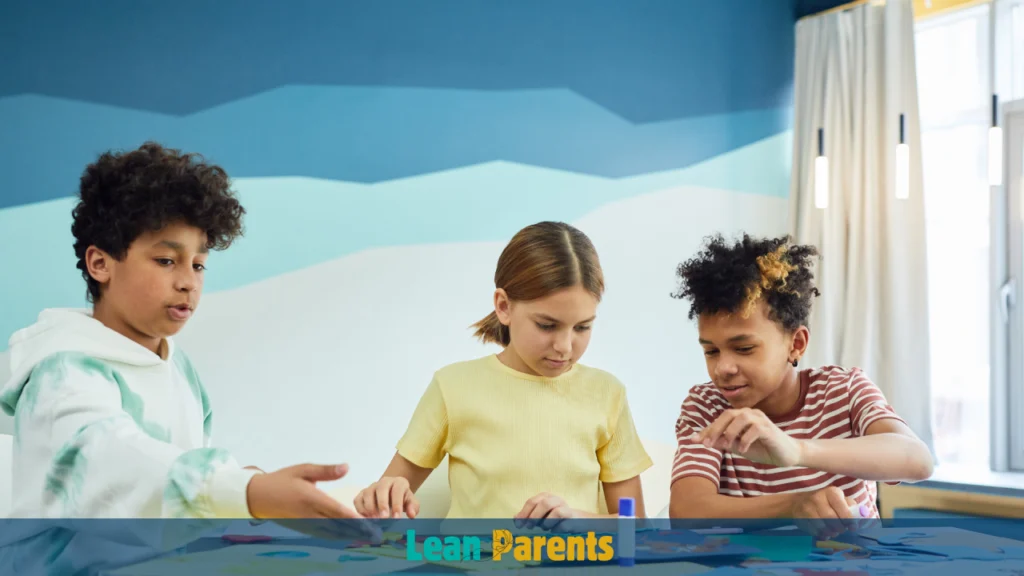
Getting kids involved in arts and crafts is a great way to teach them to be thankful. These projects let kids express themselves and learn to value the people and things in their lives. They can make crafts for Thanksgiving or any time of the year, teaching them the importance of gratitude15.
One fun project is the Paper Bag Gratitude Tree. Kids can make a 3D tree and add leaves with things they’re thankful for15. Older kids might like making a Gratitude Mobile with beads and string15. They can also Paint Gratitude Stones to remind them to be thankful15. Or, families can make a Leaf Garland with marbleized paper and gratitude messages15.
These activities help kids feel grateful and improve their emotional and social well-being15. By making something meaningful, kids learn to appreciate the world and the people in it15.
Whether it’s for Thanksgiving or any time, these DIY projects are a fun way for kids to show their gratitude15. Adding these activities to your family’s traditions can create a culture of thankfulness. It also makes lasting memories that teach kids to be more thankful and caring15.
| Gratitude Craft | Description |
|---|---|
| Family Gratitude Tree | Each family member shares what they are thankful for, adding a personal touch to holiday decor16. |
| Gratitude Tablecloth | A lasting family keepsake that grows richer with each Thanksgiving as new gratitude messages are added yearly16. |
| Gratitude Turkey Centerpiece | A fun and meaningful Thanksgiving craft enjoyed by kids, with each feather including a thankful thought16. |
| Gratitude Cootie Catcher | Ideal for younger kids to express gratitude through fun prompts16. |
| Turkey Handprint Painting | Captures family memories with each member’s handprint forming a turkey’s feathers on canvas16. |
By adding these arts and crafts projects to your family’s traditions, you can teach kids to be thankful. These activities help kids develop a grateful mindset and connect with what they value most15.
Incorporating Gratitude into Family Meals
Family meals are a great chance to teach kids about gratitude. By making gratitude a part of your meals, you can strengthen family bonds and encourage appreciation for food17. This can lead to deeper conversations and a better understanding of the value of food17.
Dinner Table Discussion Topics
Begin by asking everyone to share something they’re thankful for. This simple act can help kids see the good things in their lives18. You can also ask questions like “What was the kindest thing someone did for you today?” or “What made you smile today?”18.
Food-based Gratitude Activities
Make meals more fun by adding gratitude-themed snacks. For example, you can make a “Turkey Pretzel” craft with pretzels, chocolate chips, and other edible decorations17. Or, prepare a “Fruit Turkey Platter” and talk about the colors and textures of the fruits17.
Involve your kids in baking or making a dish to share with others. Talk about why you chose to make it and how it can make others happy18.
Use food colors or shapes to talk about gratitude. Ask your kids to share something they’re thankful for that is red, or something represented by a food on their plate18.
By focusing on gratitude during meals, you create a positive and caring environment. This environment supports emotional well-being, social growth, and a lifelong appreciation for life’s blessings18.
Outdoor Activities for Teaching Appreciation
Exploring the outdoors is a great way to teach kids to appreciate nature. It helps them learn about the environment and feel grateful for it. By doing activities outside, kids can develop a love for the world around them.
Begin with a Gratitude Hunt. Ask your kids to go outside and write down things they’re thankful for. This could be the sun, birds singing, or even a breeze. It’s a simple way to help them see the beauty of nature19.
Try Gratitude Walks too. Take walks with your kids and stop to notice small joys. Like the breeze or the colors of leaves. These moments help them feel thankful and connected to nature20.
Use outdoor time to talk about how nature and us are connected. Teach kids why we should care for our planet. This can help them understand their role in protecting the environment and develop a lifelong love for nature.
| Outdoor Gratitude Activities | Benefits |
|---|---|
| Gratitude Hunt | Cultivates nature appreciation and observation skills |
| Gratitude Walks | Fosters environmental awareness and mindfulness |
| Nature Discussions | Develops understanding of the interconnectedness of nature and reasons for gratitude |
By making outdoor learning a part of your child’s life, you can help them feel grateful and amazed by nature1920.
The Power of Thank You Notes and Letters
Teaching kids to write thank you notes and cards is a great way to improve their communication skills. It also helps them appreciate the kindness they receive. When they write from the heart, it boosts their emotional and social growth.
Creative Writing Exercises
Make writing thank you notes fun with creative exercises. Give kids prompts like “Describe how the gift made you feel” or “What do you love about the person who gave it to you?”21 Encourage them to use vivid words and share personal stories to show their true thanks22.
Personalized Card Making
Homemade cards are loved by 93% of Americans21. Use art supplies and stickers to let kids create special cards. This activity boosts their creativity and teaches them the value of saying thanks22.
Also, encourage kids to write to community helpers and first responders. It shows them the importance of gratitude beyond family. It also helps them develop strong communication skills for the future22.
By making thank you note writing fun, you help kids develop a habit of gratitude. It also deepens their understanding of communication’s power23.
Mindfulness and Gratitude Exercises for Kids
Introducing meditation for children, stress reduction, and emotional regulation can be very beneficial. It helps kids feel more grateful and mindful. Studies show that kids who practice gratitude are happier and more optimistic24.
These practices also improve their relationships and health24. Mindful gratitude activities help kids appreciate what they have. They learn to find joy in the small things and understand that happiness comes from within24.
Activities like the Gratitude Gift and Gratitude Jar can make kids feel more thankful and joyful24. For older kids, the Gratitude Photo Challenge helps them focus on the good things in their lives24.
- Gratitude practice can lead to improved optimism, reduced stress, and physical benefits like increased exercise and fewer doctor visits9.
- Engaging children in gratitude activities can help instill a sense of gratitude from as early as 4 years old9.
- Mindfulness and gratitude activities, such as My Gratitude Walk, Gratitude Scavenger Hunt, and Gratitude Yoga, can be enjoyable for children aged 4 and up9.
- Children as young as 6 years old can engage in journaling as a gratitude exercise to reflect on their thoughts and experiences9.
- Reading gratitude-themed books can help children as young as 3 years old appreciate the good things in their lives, value relationships, and develop a growth mindset9.
Gratitude can make interactions in families, schools, and communities more positive25. It’s important for parents to model gratitude at home. Using art, journaling, and thank-you notes can help kids express their feelings25.
Teaching kids to give and find beauty in the world can also build gratitude in them25.
By adding these meditation for children, stress reduction, and emotional regulation practices, we can help kids develop a lifelong habit of gratitude. This leads to increased well-being and positive relationships.
Using Technology to Teach Gratitude
In today’s world, tech offers new ways to teach kids to be thankful. Research shows26 that using digital tools with gratitude lessons can really help kids feel better and connect with others. Teachers are now using tech to teach important skills like teamwork, communication, and problem-solving. Adding gratitude lessons to these activities can be very effective.
Educational Apps and Games
Apps and games about gratitude make learning fun for kids. Studies26 show that tech can help all students, especially those who are often left out. Tools like GiveThx26 let kids share thanks without feeling awkward, making it a safe space for real feelings.
Digital Gratitude Projects
Technology also helps with bigger projects about gratitude. Teachers can ask kids to make videos or write blogs about what they’re thankful for. This way, kids can fight bullying online and show appreciation in their own way.
By using tech for gratitude, teachers and parents can build a positive online community. This community values kindness, teamwork, and creativity, helping kids grow emotionally and socially.
| Educational Technology | Digital Learning | App-based Activities |
|---|---|---|
| Gratitude-focused apps and games | Digital platforms for creating thank-you videos and blogs | Interactive activities using Flipgrid, Edublogs, Schoology, and more |
| The GiveThx digital tool for safe, genuine emotional expression | Promoting a digital culture of trust, kindness, and collaboration | Allowing introverted and extroverted kids to express gratitude |
“Expressing gratitude through the digital tool was particularly beneficial for students with identity needs that made public expression challenging, such as language learners, young women, LGBTQ youth, and special-needs students.”26
Using educational technology, digital learning, and app-based activities can make teaching gratitude fun and effective. By using today’s tech, we can help kids appreciate more and grow emotionally and socially262728.
Reading Books That Inspire Gratitude
Children’s29 books can teach kids to be thankful. Classics like “The Thank You Book” by Mo Willems and “Last Stop on Market Street” by Matt de la Pena show the value of saying thanks29.
Books like “We are Grateful: Otsaliheliga” by Traci Sorell show how different cultures show gratitude29. Kids can also write their own stories about being thankful. This helps them learn and improve their30 reading and storytelling skills.
- “Thank You, Omu!” by Oge Mora tells a story of kindness and generosity30.
- “All the World” by Liz Garton Scanlon teaches kids to see the beauty in everyday things30.
- “Grateful: A Song of Giving Things” by Jon Bucchino is a peaceful story that encourages gratitude30.
Reading stories about thankfulness helps kids understand and appreciate the world29. These30 books not only teach gratitude but also improve29 reading and29 storytelling skills.
Looking through classics or new books, children’s books about gratitude are a great way to teach kids about thankfulness29.
“Gratitude unlocks the fullness of life. It turns what we have into enough, and more. It turns denial into acceptance, chaos into order, confusion into clarity.” – Melody Beattie
Service Projects and Community Involvement
Doing volunteer work as a family can teach kids about volunteering, community service, and social responsibility. Teaching kids the value of empathy through community service can help them become kinder and more compassionate31. Volunteering also helps kids learn important life skills31. It makes teenagers feel more connected to their community, giving them a sense of belonging31.
Being part of volunteering activities as a family has many benefits. People who volunteer become more aware of their surroundings and the people they meet every day31. It boosts confidence as they see how their actions can change things31. Community service helps young people develop leadership skills by taking charge and finishing tasks31. It also strengthens family bonds and teaches valuable lessons31.
There are many fun ways to get involved in community service as a family. PBS Kids is a great resource for parents looking to make a difference31. Showing kids how to volunteer can inspire them to help out too31. Volunteer work helps families focus on helping others, bringing them closer together31.
- The 30 Days of Service Challenge encourages regular service activities32
- The Arbor Day Tree Campus K-12 program helps turn school campuses into arboretums32
- The St. Jude Math-a-Thon combines math with fundraising32
- Feeding America offers tools for organizing food drives32
- Project Linus involves sewing blankets for children in need32
- The Meatless Mondays campaign raises awareness about meat’s impact on the planet32
| Service Project Ideas | Categories | Suggestions for Participation | Geographic Focus |
|---|---|---|---|
| Total: 37 |
| Scouts, schools, church youth groups, clubs, etc. | Local and global projects |
Finding fun and easy volunteer projects can encourage family participation in community service. Organizing volunteer efforts into the family schedule ensures regular involvement31. Involving friends and extended family members can increase the impact of community service31. Ideas like planting trees, food drives, participating in events, and helping shelters can be fun for families33.
Encouraging children to create their own community service projects can spark creativity and initiative31. Offering diverse volunteer opportunities can expose children to various fields that need help33. Involving different generations, like seniors and young kids, in volunteer activities can offer unique perspectives on community service33. Recognizing and celebrating the impact of volunteer efforts can motivate continuous engagement in community service31.
“Engaging in family volunteer activities can be a meaningful way to teach kids the value of volunteering, community service, and social responsibility.”
Creating Family Gratitude Traditions
Starting family traditions about gratitude can deeply impact kids’ growth and happiness. By adding regular gratitude practices at home, you help your family see the good in life. This creates memories that shape your kids’ character.
Monthly Celebrations
Start monthly gratitude celebrations to grow thankfulness. At the start of each month, your family writes down things they’re thankful for in a “Gratitude Jar”34. Then, on a special “Gratitude Day,” share these notes and thank each other.
Special Ritual Ideas
Make gratitude a part of your holiday celebrations too. Before Thanksgiving, have everyone share what they’re thankful for35. This simple act strengthens family bonds and teaches kids to be thankful. You can also create a “Gratitude Tree” where you post notes of thanks all year.
These gratitude traditions help kids develop a lifelong habit of thankfulness35. Gratitude in kids boosts their emotional health, social skills, and mental toughness.
Make these gratitude rituals fun and meaningful for your family. Customize them to fit your kids’ likes and ages34. This way, you’ll build a strong sense of appreciation and family connection.
Addressing Challenges in Teaching Gratitude
Teaching kids to be thankful can be both rewarding and tough for parents. One big challenge is fighting against the culture of wanting more and feeling entitled. It’s important to show kids the value of being grateful for what they have, not just what they don’t have36.
Feeling jealous or comparing oneself to others can also make it hard for kids to feel thankful. Parents can help by teaching them to appreciate their own good things and strengths. This helps kids feel better about themselves and more positive36.
It’s also important to make gratitude practices fit each child’s age and personality. What works for one might not work for another. This way, every child can find a way to express their gratitude in their own way.
Teaching gratitude is a long-term effort that needs patience and dedication37. Even with challenges, keeping up the focus on thankfulness and kindness is key. This helps kids grow up to be more thankful, strong, and caring towards others36. With the right approach, parents can help their kids become more grateful and compassionate.
FAQ
What is the importance of teaching kids gratitude?
How can families create daily gratitude rituals?
What are some fun gratitude games and activities for kids?
How can kids make gratitude journals creative and engaging?
What are some ways to incorporate gratitude into family meals?
How can technology be used to teach kids gratitude?
What are some challenges in teaching kids gratitude and how can parents address them?
Source Links
- How to Teach to Experience and Express True Gratitude
- The Playlist: Activities for kids that are all about teaching gratitude
- Teaching Kids About Gratitude: An Ages and Stages Guide — Ann Douglas: Parenting Author & Speaker
- How to Teach Gratitude & Activities for Kids | Children’s Bureau
- Simple & Fun Ways to Teach Kids About Gratitude
- 15 Fun and Simple Gratitude Activities for Kids
- Creating Gratitude Family Rituals
- I’m Grateful for Gratitude Games & Activities! – Grass Roots Muddy Boots
- 10 Gratitude Activities for Kids
- How To Teach Kids To Be Grateful With One Amazing Tip
- How to Teach Children to Be Grateful
- Teaching gratitude: Fun activities to cultivate a thankful mindset in children
- Expressing Thanks: Creative Activities for Children – Lightbridge Academy CORP
- 10 Ways to Teach Kids Gratitude: Books, Scripture, Gratitude Journal
- Fun Gratitude Activities and Crafts for Kids and Adults
- 5 Thanksgiving Crafts to Celebrate Gratitude & Family With Kids | Macaroni KID New Orleans
- How to Teach Children to Be Grateful
- Making Space for Gratitude: 15 Ideas for Schools During Challenging Times
- 36 Gratitude Activities for Kids That Are Actually Meaningful
- 21 Simple & Fun Gratitude Activities for Kids
- Teach kids kindness and gratitude with thank you notes
- The Power of Gratitude: Teaching Students to Write Thank You Notes
- 9 Creative Ways for Kids to Write Thank Yous and Why They Should | Michele Borba, Ed.D. | Child Psychologist | Parenting Expert Author
- 5 Awesome Mindful Gratitude Activities for Kids – Blissful Kids
- 11 simple gratitude activities for kids as they learn to express true appreciation
- How Technology Can Help All Students Become More Grateful
- Teaching gratitude and kindness using technology | South Carolina ETV
- Teaching Kids Appreciation
- 17 Books That Show Kids What It Means To Be Thankful | Brightly
- 23 Favorite Children’s Books About Gratitude to Inspire Everyday Thankfulness — Doing Good Together™
- Community Service Ideas for Kids & Families | Children’s Bureau
- 35 Meaningful Service Learning Projects for Kids and Teens
- 35 Service Projects for Kids
- Gratitude for Kids: Thankfulness Activities You’ll Love
- Fostering gratitude in toddlers and preschoolers
- 10 Tips for Raising Grateful Kids – Child Mind Institute
- 15 Ways to Teach Kids Kindness and Gratitude


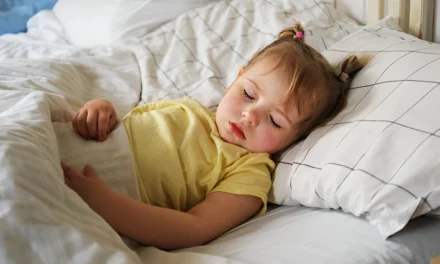
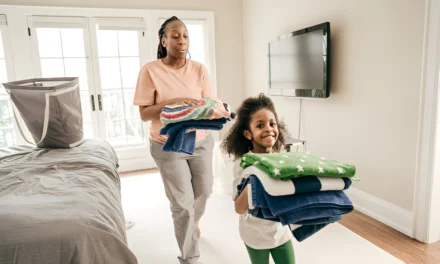
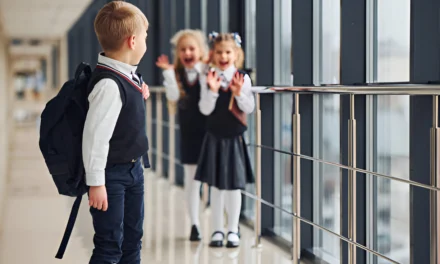
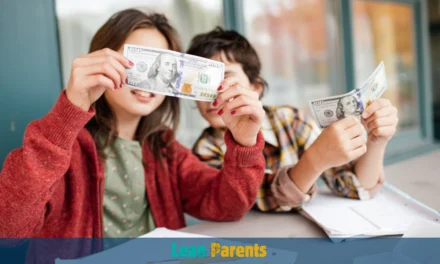
Good blogs thanks